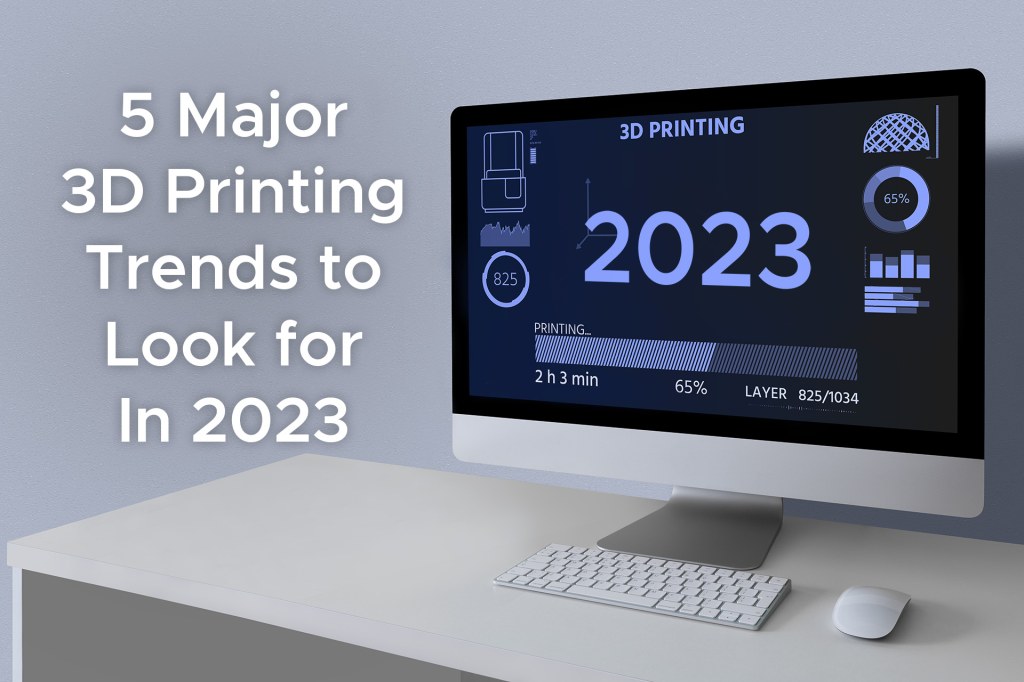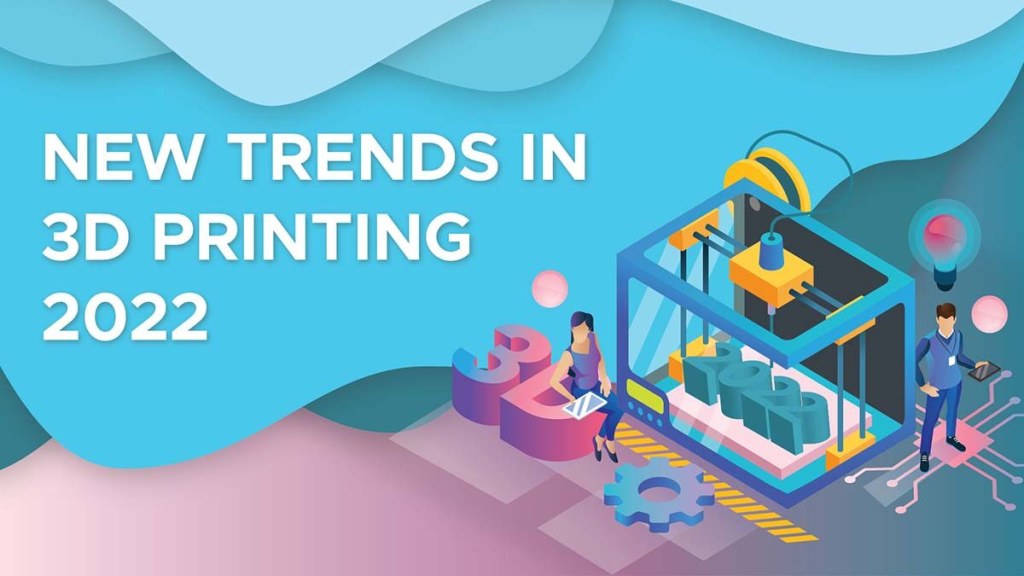Current Trends in 3D Printing
Introduction
Dear Readers,
Welcome to this informative article on the current trends in 3D printing. In the world of technology, 3D printing has emerged as a revolutionary concept that has the potential to transform multiple industries. From healthcare to automotive, the applications of 3D printing are expanding rapidly. In this article, we will explore the latest trends in 3D printing and how they are shaping the future. So, let’s dive in and discover the exciting world of 3D printing!
Table of Contents
What is 3D Printing?
The Growth of 3D Printing
The Advantages and Disadvantages of 3D Printing
Current Trends in 3D Printing
Applications of 3D Printing
Future Outlook of 3D Printing
Conclusion

Image Source: replique.io
What is 3D Printing?
3D printing, also known as additive manufacturing, is a process of creating three-dimensional objects from a digital file. Unlike traditional manufacturing methods that involve subtractive processes, such as cutting or drilling, 3D printing builds objects layer by layer, using materials such as plastics, metals, or ceramics. This technology allows for the production of complex shapes and designs, which are often not feasible with traditional manufacturing techniques.
Advancements in 3D Printing Technology
Over the years, 3D printing technology has advanced significantly. From the early days of prototyping to the present, where it is used for production purposes, the capabilities of 3D printers have drastically improved. Today, there are various types of 3D printing technologies available, including Fused Deposition Modeling (FDM), Stereolithography (SLA), Selective Laser Sintering (SLS), and more. Each technology has its own advantages and is suited for specific applications.
Who Uses 3D Printing?

Image Source: replique.io
3D printing is used by a wide range of industries and professionals. Architects utilize 3D printing to create intricate scale models of buildings, allowing them to visualize their designs more effectively. Engineers use 3D printing to prototype parts and test their functionality before mass production. Medical professionals employ 3D printing to create customized implants and prosthetics for patients. Even hobbyists and artists embrace 3D printing to bring their creative ideas to life.
When Did 3D Printing Become Popular?
The concept of 3D printing dates back to the 1980s, but it wasn’t until the early 2000s that it gained widespread popularity. As the technology became more accessible and affordable, businesses and individuals started exploring its potential. Since then, the 3D printing industry has experienced significant growth, with advancements in materials, software, and hardware driving its adoption across various sectors.
Where is 3D Printing Being Utilized?
3D printing is being utilized in numerous industries around the world. In the healthcare sector, it is used to create patient-specific models for surgical planning and educational purposes. In aerospace, 3D printing enables the production of lightweight and complex components, reducing fuel consumption and improving performance. The automotive industry utilizes 3D printing for prototyping, tooling, and creating customized parts. Additionally, 3D printing has found applications in fashion, consumer products, and even food.
Why is 3D Printing Important?
3D printing is important because it revolutionizes the way we manufacture and produce goods. It allows for greater design freedom, reduces waste, and enables on-demand production. With 3D printing, complex geometries can be created with ease, opening up new possibilities in product design. Moreover, 3D printing has the potential to democratize manufacturing, empowering individuals and small businesses to bring their ideas to life without the need for expensive equipment or resources.
How Does 3D Printing Work?
3D printing works by slicing a digital model into thin layers and then sequentially depositing or solidifying material layer by layer. The process starts with the creation of a 3D model using computer-aided design (CAD) software. The model is then converted into a format compatible with the 3D printer. The printer reads the file and extrudes or melts the chosen material to create the desired object. This layer-by-layer approach gives 3D printing its distinctive qualities and allows for intricate designs to be built with precision.
Current Trends in 3D Printing
Now let’s explore some of the current trends in 3D printing:
1. Industrialization of Additive Manufacturing
With advancements in materials and technology, additive manufacturing is increasingly being adopted by industries for large-scale production. Companies are using 3D printing to create end-use parts, tooling, and even entire products, reducing costs and lead times. This trend is expected to continue as more businesses recognize the benefits of additive manufacturing.
2. Bioprinting and Medical Applications
Bioprinting, the process of 3D printing living tissues and organs, has gained significant attention in the medical field. Researchers are working towards printing functional organs, such as hearts and kidneys, using a patient’s own cells. This technology has the potential to revolutionize organ transplantation and address the growing demand for organs worldwide.
3. Sustainability and Recycling
As sustainability becomes a global priority, 3D printing offers a solution to reduce waste and promote recycling. By using recycled materials or optimizing designs to minimize material usage, 3D printing contributes to a more sustainable manufacturing process. Additionally, 3D printing enables localized production, reducing the need for transportation and its associated environmental impact.
4. 4D Printing
4D printing is an emerging field in additive manufacturing that adds the dimension of time to 3D-printed objects. By using materials that can change shape or properties in response to external stimuli, such as heat or moisture, 4D-printed objects can self-assemble or transform over time. This technology holds promise in various applications, including robotics, architecture, and biomedical engineering.
5. Digitalization and Design Optimization
The integration of 3D printing with digital design tools allows for complex geometries to be optimized for specific applications. Designers can create lightweight and efficient structures that were previously unachievable using traditional manufacturing methods. This trend empowers engineers and designers to push the boundaries of creativity and functionality.
6. Collaboration and Open-Source Initiatives
The 3D printing community thrives on collaboration and knowledge-sharing. Open-source initiatives have played a significant role in advancing the technology by making designs, software, and hardware accessible to everyone. This trend fosters innovation and allows individuals to contribute to the growth of 3D printing.
Advantages and Disadvantages of 3D Printing
Like any technology, 3D printing has its advantages and disadvantages. Let’s take a closer look:
Advantages of 3D Printing
1. Design Flexibility: 3D printing enables the creation of complex geometries and customized designs that are not feasible with traditional manufacturing methods.
2. Cost-Effective Prototyping: Prototyping with 3D printing is faster and more cost-effective compared to traditional prototyping methods (e.g., CNC machining).
3. On-Demand Production: 3D printing allows for on-demand production, reducing inventory costs and enabling just-in-time manufacturing.
4. Customization: 3D printing enables the production of personalized products and tailored solutions to meet individual needs.
5. Reduced Waste: Additive manufacturing produces less waste compared to subtractive manufacturing methods, as only the required material is used.
Disadvantages of 3D Printing
1. Limited Material Selection: Currently, the range of materials available for 3D printing is more limited compared to traditional manufacturing options.
2. Production Speed: 3D printing is generally slower than traditional manufacturing methods, especially for large-scale production.
3. Surface Quality: The surface finish of 3D-printed objects may not be as smooth or polished as those produced using traditional methods.
4. Equipment Costs: Acquiring and maintaining 3D printing equipment can be expensive, especially for high-end industrial-grade systems.
5. Intellectual Property Concerns: The ease of replicating objects through 3D printing raises concerns about intellectual property rights and counterfeiting.
Frequently Asked Questions (FAQ)
1. Can 3D printing be used for mass production?
Yes, 3D printing can be utilized for mass production, especially with the industrialization of additive manufacturing technologies. However, it is important to consider factors such as production speed and material costs when determining the feasibility of using 3D printing for large-scale production.
2. What are the limitations of bioprinting?
Bioprinting is still in the early stages of development and faces several challenges. The complexity of printing functional organs with multiple cell types and vasculature is a significant hurdle. Additionally, ensuring the long-term viability and compatibility of printed tissues and organs with the recipient’s body remains a critical area of research.
3. How does 3D printing contribute to sustainability?
3D printing contributes to sustainability by reducing waste through optimized designs and localized production. It allows for the use of recycled materials and eliminates the need for transportation over long distances, leading to a smaller carbon footprint. However, it is essential to consider the environmental impact of the materials used in 3D printing and their end-of-life disposal.
4. Can 3D printing replace traditional manufacturing methods?
While 3D printing offers numerous advantages, it is unlikely to replace traditional manufacturing methods entirely. Traditional methods still excel in high-volume production, where economies of scale come into play. However, 3D printing complements traditional manufacturing by offering unique capabilities in terms of design freedom, customization, and rapid prototyping.
5. How can individuals contribute to the growth of 3D printing?
Individuals can contribute to the growth of 3D printing by actively participating in open-source communities, sharing their knowledge and designs. They can also support local businesses and startups that adopt 3D printing technology. Additionally, staying updated with the latest trends and advancements in the field can contribute to the dissemination of knowledge and the overall progress of 3D printing.
Conclusion
In conclusion, the current trends in 3D printing are shaping the future of manufacturing and opening up new possibilities across various industries. From industrial-scale production to bioprinting organs, the potential of 3D printing is immense. While there are advantages and disadvantages to consider, the benefits of this technology are undeniable. As 3D printing continues to evolve, it is crucial for businesses, professionals, and individuals to embrace innovation and explore the endless opportunities it offers.
Final Remarks
Friends, the world of 3D printing is constantly evolving, and it is essential to stay informed about the latest trends and advancements. The information provided in this article serves as a guide to help you understand the current state of 3D printing. However, it is important to conduct further research and seek expert advice when implementing 3D printing solutions. Remember, innovation and collaboration are key to unlocking the full potential of 3D printing and shaping a better future.